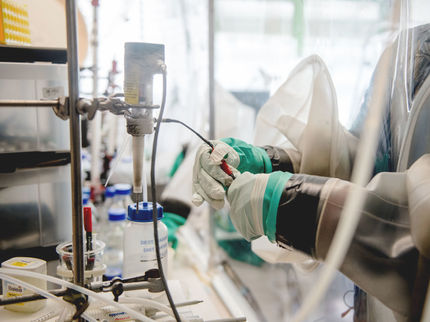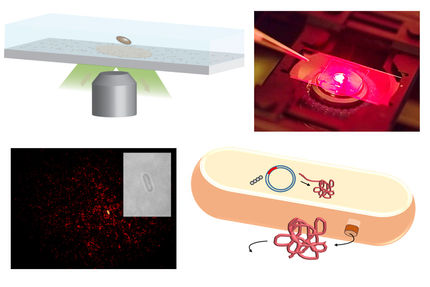Muscular protein bond -- strongest yet found in nature
Single-molecule experiments show how mechanical strength in muscles is anchored in the titin-telethonin complex
A research collaboration between Munich-based biophysicists and a structural biologist in Hamburg is helping to explain why our muscles, and those of other animals, don't simply fall apart under stress. Their findings may have implications for fields as diverse as medical research and nanotechnology.
The real strength of any skeletal muscle doesn't start with exercise; it comes ultimately from nanoscale biological building blocks. One key element is a bond involving titin, a giant among proteins. Titin is considered a molecular "ruler" along which the whole muscle structure is aligned, and it acts as an elastic spring when a muscle is stretched.
Titin plays a role in a wide variety of muscle functions, and these in turn hinge on the stability with which it is anchored in a structure called the sarcomeric Z-disk. Research published in 2006 showed this anchor to be a rare palindromic arrangement of proteins – that is, it "reads" the same way forward and backward – in which two titin molecules are connected by another muscle protein, telethonin. Simulations have pointed toward a network of tight hydrogen bonds linking titin and telethonin as a source of stability. But direct measurements that would further advance this investigation have been lacking, until publication of experimental results in the Proceedings of the National Academy of Sciences (PNAS). The authors are Prof. Matthias Rief and Morten Bertz, M.Sc., of the Technische Universität München (TUM) – who also are members of a Munich-based "excellence cluster" called the Center for Integrated Protein Science – and Prof. Matthias Wilmanns of the European Molecular Biology Laboratory in Hamburg.
These first-ever measurements of mechanical stability in the titin-telethonin protein complex show it to be a highly "directed" bond, extremely strong but only along the lines of natural physiological stress. Thus even at the nanoscale, this complex is oriented to resist forces that reflect the macroscale function of the organism – contraction and relaxation of skeletal muscles.
Advanced biological and physical techniques gave the researchers a handle on this nanoscale "anchor" – basically allowing them to pull on the bond from various directions and measure its performance under stress. Single-molecule force spectroscopy was performed on a custom-built atomic force microscope. Well characterized mechanical "fingerprints" made it possible to distinguish single-molecule events from non-specific interactions as well as from multi-molecule events.
Their measurements confirm that in the direction that corresponds to muscular contraction and relaxation, the titin-telethonin complex is the strongest protein bond found so far in nature. When force was applied in different directions, the proteins of the complex slid apart. The bond can be compared to a mechanical hook that holds fast when pulled upward but otherwise uncouples easily.
The researchers anticipate that directedness of protein bonds will be an important concept in studying a variety of other molecular complexes that nature subjects to mechanical strain in living organisms. Better understanding could potentially inform physiological research and biomedical applications. Such insights might also inspire biomimetic research and design for nanotechnology.
Original publication: Morten Bertz, Matthias Wilmanns, and Matthias Rief; "The Titin-Telethonin complex: A directed, super stable molecular bond in the muscle Z-disk"; Proceedings of the National Academy of Sciences, July 20, 2009
See the theme worlds for related content
Topic World Spectroscopy
Investigation with spectroscopy gives us unique insights into the composition and structure of materials. From UV-Vis spectroscopy to infrared and Raman spectroscopy to fluorescence and atomic absorption spectroscopy, spectroscopy offers us a wide range of analytical techniques to precisely characterize substances. Immerse yourself in the fascinating world of spectroscopy!

Topic World Spectroscopy
Investigation with spectroscopy gives us unique insights into the composition and structure of materials. From UV-Vis spectroscopy to infrared and Raman spectroscopy to fluorescence and atomic absorption spectroscopy, spectroscopy offers us a wide range of analytical techniques to precisely characterize substances. Immerse yourself in the fascinating world of spectroscopy!


























































